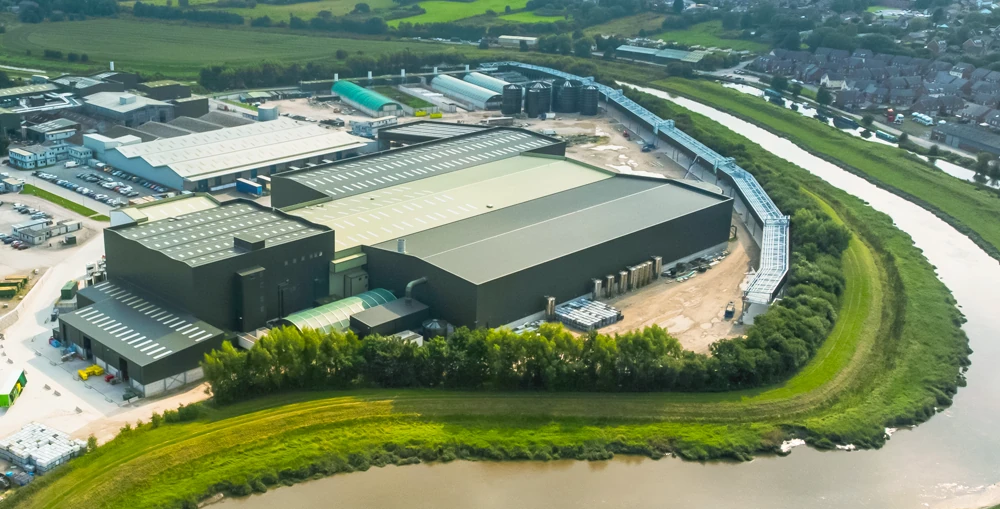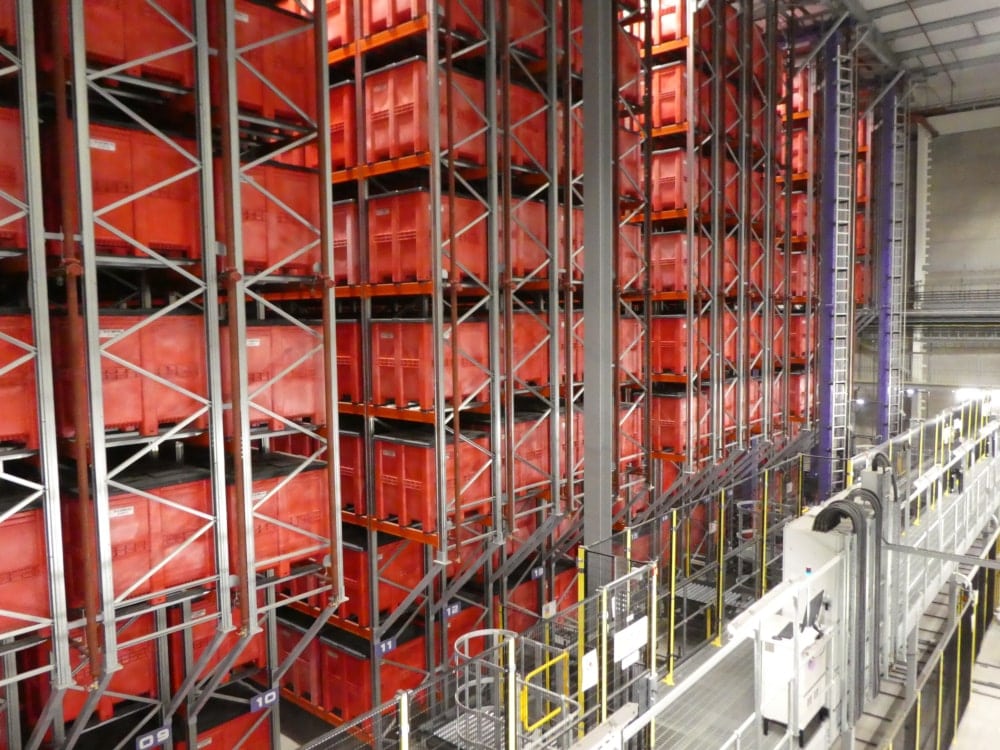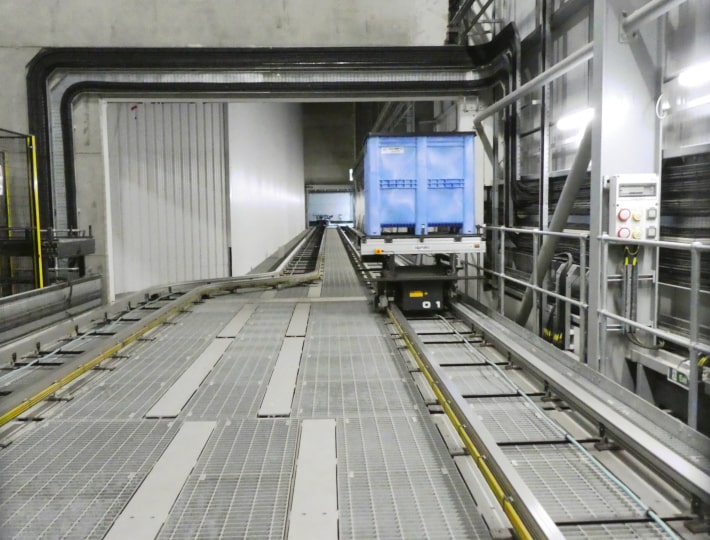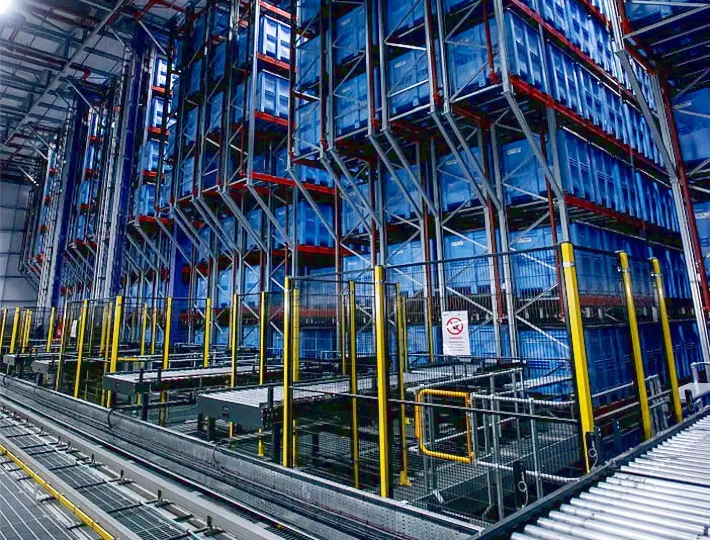為什麼準時制供應鏈不再是唯一的解決方案

Daifuku 的業務發展經理 Russell Hutchinson 認為,精益製造和供應鏈的時代可能即將結束。在這裡,他審視了正在改變自動化和物流規則的全球力量。
從我記事起,“精益”就一直是描述最佳供應鏈的首選形容詞。無論是食品、汽車、備件還是時尚行業,物流過程中的脂肪越少越好。高度複雜的自動化和倉庫管理系統已經發展到允許實時移動、跟踪和監控數千個 SKU。任何在過去 30 天內沒有移動的產品都是供應鏈管理效率低下的跡象。
英國退歐之後,國際航運失敗,例如 2021 年的 Evergreen,持續不斷的 Covid 流行病和烏克蘭衝突,曾經可靠的全球供應鏈已經被拉到斷點。全球範圍內的微芯片短缺導致許多汽車製造商陷入虧損,原因是無法供應成品車。今年早些時候(2022 年 7 月),豪華汽車品牌阿斯頓馬丁公佈上半年虧損 2.854 億英鎊,原因是供應鏈短缺導致數百輛汽車未完工。
近年來,我們已經看到供應鏈中斷影響了其他行業,導致某些食品、燃料、備件甚至廁紙短缺。
精益理念

早在 80 年代初,汽車行業的生產計劃人員就可以輕鬆採購零部件,熱衷於滿足渴望滿足全球蓬勃發展的市場需求的製造商的不懈需求。然而,當經濟周期放緩時,製造商發現自己擁有大量庫存,迫使以日本製造商為首的行業探索將庫存水平和風險降至最低的新方法。準時生產 (JIT) 的概念誕生了——供應鏈管理的新時代開始了。
雖然 JIT 和 KANBAN 等其他精益工具的概念是高效製造的重要元素,但最近的全球事件促使對這一主導全球貿易和工業數十年的基本結構進行了修訂。
自動化——供應鏈解決方案

雖然一夜之間重新設計已建立的供應鏈並不容易,但越來越多的公司現在正在探索替代採購策略、增加緩衝庫存和提高自動化程度的選項,以降低其當前運營的風險。
我們最近為英國寵物食品製造商GA Pet Food Partners完成了一個重大項目,該項目證明了不要總是假設「精益是最好的」的重要性。這家總部位於蘭開夏郡的企業為全球 2,500 多家客戶提供服務,生產超過 80,000 噸的完整狗糧和貓糧,符合嚴格的人類級標準。其對智慧自動化的創新運用增強了企業的營運效率,同時使其能夠為其全球寵物食品品牌客戶群生產 930 種不同的產品。
複雜化簡單
能夠在保持最高食品標準的同時管理這種複雜性,很大程度上歸功於公司採用了一流的技術,其中包括全自動叉車、高架存儲和檢索系統、分揀轉運車 (STV) 、輸送機和自動導引車在運營設施之間運行。
Daifuku 負責 GA Pet Foods 工廠配料廚房區域內存儲和檢索系統的設計和安裝。該解決方案包括 12 台自動化起重機和相關貨架,可創建 21,000 個獨特的存儲位置。

Pantry- 在生產前儲存原料

高速輸送分貨系統STV

Larder- 包裝前儲存成品
有趣的是,GA Pet Food Partners的自動化投資策略得到了該公司採用銷售和營運規劃 (S&OP) 原則的支持。 GA 團隊並沒有假設“精益總是正確的”,而是花時間真正了解他們的運作方式,並意識到“精益”對他們來說並不是正確的方法。
在這裡,自動化並不是為了節省勞動力或削減成本。技術使其產量增加了 30%,提高了工廠的整體效率(擠出正常運行時間提高了 15%)並保持了世界一流的質量標準。前沿自動化的使用還使 GA Pet Foods 保持靈活性——這是其在全球寵物食品生產領域具有競爭優勢的關鍵領域之一。這一切都是在不增加工廠員工人數的情況下完成的。
重新思考汽車精益

汽車製造商特斯拉能夠通過提供沒有某些功能(例如藍牙或腰部支撐)的車型來迴避全球芯片短缺造成的一些問題。他們在內部重新設計零件的能力(由於他們的垂直整合戰略較少依賴外部供應商)在過去幾年中為企業提供了良好的服務。據路透社報導,該公司在 2021 年將交付量提高了 87%,令人印象深刻,當時股價上漲了 13%。
然而,實際上大多數汽車製造商都依賴於他們複雜的供應商網絡。這意味著對緩衝庫存的投資通常是他們應對供應鏈不可預測性威脅的最有力武器。
今年汽車物流與供應鏈全球會議的主要收穫之一是,越來越多的製造商和供應商願意在供應鏈彈性方面重新評估權衡取捨。
事實上,2022 年的活動證實,通用汽車等主要原始設備製造商現在持有更多庫存和緩衝庫存,並且對改變對精益原則的承諾變得更加開放。同樣,農業設備製造商 Agco 表示,作為其供應鏈戰略的一部分,它在確保庫存方面變得更加“積極”。當然,大福已經看到各行各業的製造商顯著增加,他們積極探索增加庫存、緩衝庫存、自動化和供應鏈可見性的方案。
這是一種微妙的平衡行為,因為許多製造商沒有利潤或營運資金來承擔額外的庫存。在投資自動化和倉儲以建立更大的供應鏈彈性時,重要的是要取得平衡。對於一些企業來說,根本沒有足夠的資本儲備來大量投資於倉儲以創建緩衝庫存。對於其他人來說,他們目前的供應網絡根本沒有可行的替代方案。如果有的話,從一個供應商轉移到另一個供應商也不是一件容易的事。
精益概念和供應鏈的下一步是什麼?
雖然精益製造和供應鏈肯定會以一種或另一種形式存在,但我們看到許多製造商在評估替代模型時持更加開放的態度。自動化是解決供應鏈難題的一種方法,它能夠最大化存儲容量、提高效率並簡化分銷和製造操作。
有興趣了解更多有關 GA Pet Food 如何從大福找到合適的物料處理解決方案的信息嗎?閱讀案例研究。如果您在尋找最佳緩衝解決方案以提高供應鏈彈性方面需要幫助,請聯繫我們的大福全球辦事處之一或通過“聯繫我們”按鈕聯繫我們。
拉塞爾·哈欽森

内部物流物流業務開發經理 , Daifuku Europe
Russell Hutchinson 是 Daifuku 負責英國和愛爾蘭業務的業務開發經理。從諾丁漢特倫特大學獲得工程學士學位後,他已從事銷售工作超過 25 年,過去 7 年一直從事倉庫自動化銷售工作,並於 2021 年加入大福。
聯繫我們
如需產品諮詢,請通過我們的聯繫我們頁面與我們聯繫。
聯繫我們聯繫我們
如需產品諮詢,請通過我們的聯繫我們頁面與我們聯繫。
聯繫我們
